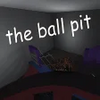A horror game set in a fast-food restaurant’s play area
A horror game set in a fast-food restaurant’s play area
Pros
- Engaging blend of familiar settings and horror elements
- Unique and vivid visual presentation
- Simple and intuitive gameplay mechanics
- Flexible ‘name your own price’ model for supporting indie development
Cons
- Limited interaction and scope within the game's environment
- Potentially too short for players seeking a more extensive experience
The Ball Pit is an indie survival horror game that plunges the player into the whimsically terrifying setting of a fast-food restaurant play area gone nightmarishly awry. Crafting an experience that blends familiarity with foreboding, The Ball Pit stands out as a notable entry in its genre through its aesthetic choices and gameplay.
A Sinister Twist on a Childhood Staple
Set against the backdrop of an eerily nondescript fast-food joint, The Ball Pit invites players to step into the shoes of a character drawn to the nostalgia of the restaurant's play area. The sense of nostalgia swiftly transitions to horror as the play area becomes a labyrinth of danger. The fictional establishment, dubbed McDongs, offers a satirical nod to real-life chains, instantly setting a tone that is both relatable and unsettling for the player.
Gameplay Dynamics: Simplicity Meets Suspense
The fundamental mechanics of The Ball Pit are accessible, making it easy even for novices to jump right into the action—or rather, into the terror that awaits. Navigating through the game’s world, players encounter a first-person perspective that heightens the immersion, with most interactions pertaining to maneuvering through a maze of doors and passageways.
The objective is clear yet daunting: survive the twisted, subterranean confines of the restaurant's play area and find a way to escape. The simplicity of the controls and goals contrasts starkly with the creeping dread of the game's ambiance, ensuring that the experience remains engaging without overwhelming players with complex mechanics.
Visuals: Strikingly Vibrant in a Dark Genre
What separates The Ball Pit from its contemporaries is the visual presentation. Eschewing the often pixelated or retro graphics commonly employed in indie horror, the game opts for bright and bold colors that juxtapose against the ominous overtones of the gameplay. This choice delivers a 'colorful horror' that not only stands out but also subverts the expectations of the genre, making familiar environments seem alien and threatening in the vibrancy of their presentation.
Supporting Indie Development
The Ball Pit follows a commendable 'name your own price' model that allows players the flexibility to support the creators voluntarily. This model opens the game up to a wider audience, providing the freedom to download without upfront cost while also offering an opportunity for appreciators of the game to contribute financially.
Drawbacks
Despite its strengths, some players might find The Ball Pit's scope somewhat limiting, with interaction restricted primarily to door mechanics and exploration within the game's linear narrative. The length of the game might also be a consideration, as it aligns with the trend of short-form horror games that some may feel ends too abruptly.
Conclusion
The Ball Pit serves as a unique addition to the horror genre, taking a common childhood memory and warping it into an experience filled with tension and trepidation. While it maintains straightforward gameplay and user-friendly mechanics, it innovates with its vivid visual design and contributes to the evolving landscape of survival horror.
Pros
- Engaging blend of familiar settings and horror elements
- Unique and vivid visual presentation
- Simple and intuitive gameplay mechanics
- Flexible ‘name your own price’ model for supporting indie development
Cons
- Limited interaction and scope within the game's environment
- Potentially too short for players seeking a more extensive experience




